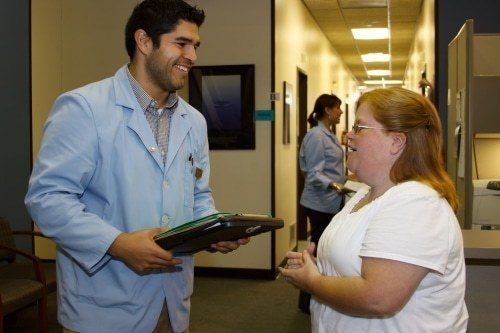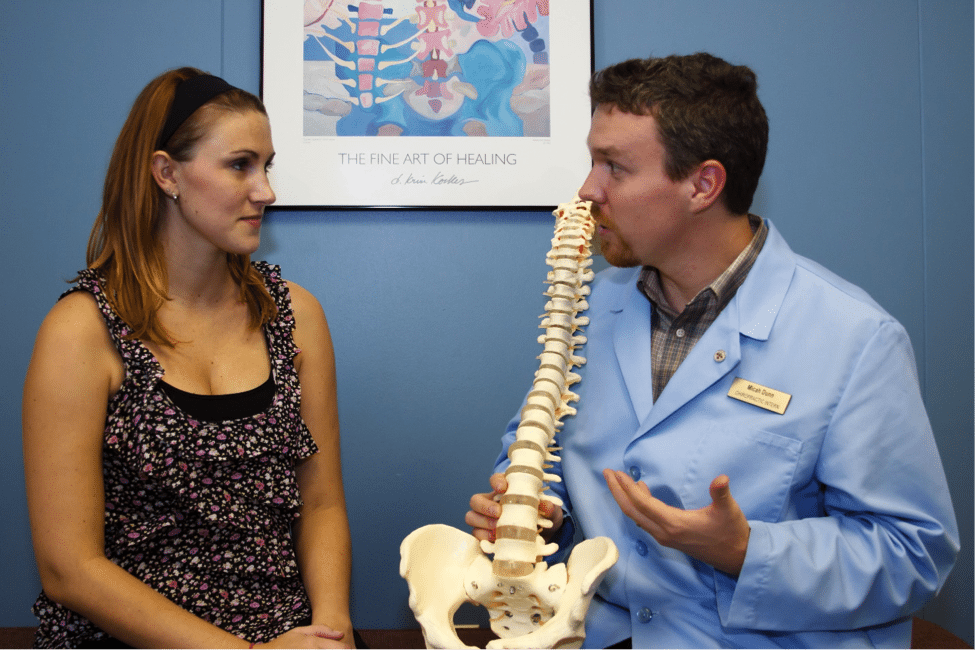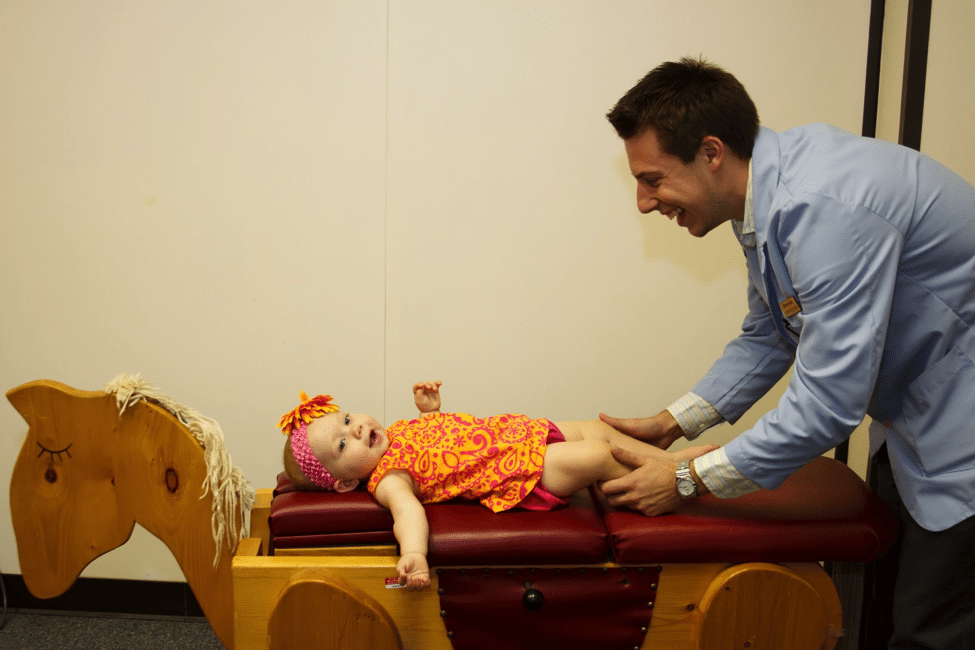[et_pb_section bb_built=”1″ admin_label=”section”][et_pb_row admin_label=”row”][et_pb_column type=”4_4″][et_pb_text admin_label=”Text” _builder_version=”3.0.49″ background_layout=”light” text_orientation=”center” border_style=”solid”]
5 Popular Questions about Chiropractic
[/et_pb_text][et_pb_text admin_label=”Text” _builder_version=”3.0.49″ background_layout=”light” text_orientation=”left” border_style=”solid”]
Chiropractic is still a relatively new health care profession, discovered in 1895. Despite evidence regarding its positive impact on health and increasing demand for chiropractic, a number of questions about its purpose and application persist. Many Doctors of Chiropractic take on roles as instructors. They work at colleges and within their communities to raise awareness about the true nature of chiropractic as a natural, holistic addition to their health care regime.
Considering pursuing chiropractic training to become a D.C.? Read on to discover which questions you might encounter while working with patients or myths you may even believe yourself!
1. Is the Purpose of Chiropractic to Treat Pain or Symptoms?
No! Many people only visit their chiropractor when they experience pain. Like patients who only visit a dentist when it’s time for a root canal, these people are missing out on the true purpose of chiropractic. Facilitating optimal health by keeping the body functioning at its best at all times is the main goal of chiropractic.
Chiropractic adjustments — much like regular teeth cleanings, a healthy diet and exercise — help the body perform at its best. Rather than treating a particular ailment or disease, chiropractic helps the central nervous system maintain communication with the rest of the body’s systems for optimal performance.
2. Is Chiropractic Focused Only on Back and Neck Problems?
Many people associate chiropractic with back pain, neck pain, and headaches.There is a widespread belief that D.C.s only focus on the back and neck and that the benefits of care are confined to this area. But there is so much more to chiropractic. Chiropractors locate and correct vertebral misalignments (subluxations) as a means of promoting whole-body health – not to “fix” back problems.
Chiropractic education focuses on the whole body to check for any disconnections in the effectiveness of the body’s own natural healing ability. Doctors of chiropractic identify these interferences and apply a gentle, specific force to help the body restore balance and healing.
3. Is Chiropractic Appropriate for Babies and Young Children?
Absolutely! Maintaining good health is a worthy goal at any age. Increasingly, parents bring their children to D.C.s to be checked, and if needed, gently adjusted. Regular checks for newborns, toddlers and teens are a great way to locate and correct subluxations early on and promote overall health during the critical years of physical development.
4. Are Chiropractic Adjustments Dangerous?
No, in fact, the preventative and non-invasive nature of chiropractic makes it one of the safest health care applications in the world.
The sound that sometimes accompanies an adjustment mimics the sound of bones being “cracked.” In truth, the sound comes from the joints between the bones. During an adjustment, the joint is briefly unlocked so that it can return to its optimal and natural positioning. As the joint unlocks, pressure may escape and cause an audible “click.”
5. Do Doctors of Chiropractic Lack Training as Compared to Medical Doctors?
No. Doctors of Chiropractic receive a thorough and rigorous education. Like medical doctors, they spend several years studying human science and develop a comprehensive understanding of neuroanatomy, the musculoskeletal system, pathology, and microbiology. They also study ethics and chiropractic philosophy, conduct research, and engage in community service.
Chiropractic college curricula are challenging, and most programs include between 4,220-5,265 classroom hours and a total of three and a half years of education beyond traditional college.
Institutions like Sherman College of Chiropractic provide students with a personalized, thorough clinical experience to hone their technical skills and build confidence. Graduates of leading chiropractic programs are highly skilled, expertly trained, and have the hands-on experience necessary to launch their own practice directly after graduation.
Visit the Sherman website to see if our college is the right fit for you.
[/et_pb_text][/et_pb_column][/et_pb_row][et_pb_row admin_label=”Row” _builder_version=”3.0.49″ background_position_1=”top_left” background_repeat_1=”no-repeat” background_position_2=”top_left” background_repeat_2=”no-repeat” background_position_3=”top_left” background_repeat_3=”no-repeat”][et_pb_column type=”1_3″][et_pb_post_nav admin_label=”Post Navigation” _builder_version=”3.0.49″ in_same_term=”off” hide_prev=”off” hide_next=”on” border_style=”solid” border_color=”#0c71c3″ title_font=”|on|||” title_font_size=”16px” /][/et_pb_column][et_pb_column type=”1_3″][/et_pb_column][et_pb_column type=”1_3″][et_pb_post_nav admin_label=”Post Navigation” _builder_version=”3.0.49″ in_same_term=”off” hide_prev=”on” hide_next=”off” border_style=”solid” border_color=”#0c71c3″ title_font=”|on|||” title_font_size=”16px” /][/et_pb_column][/et_pb_row][/et_pb_section]








